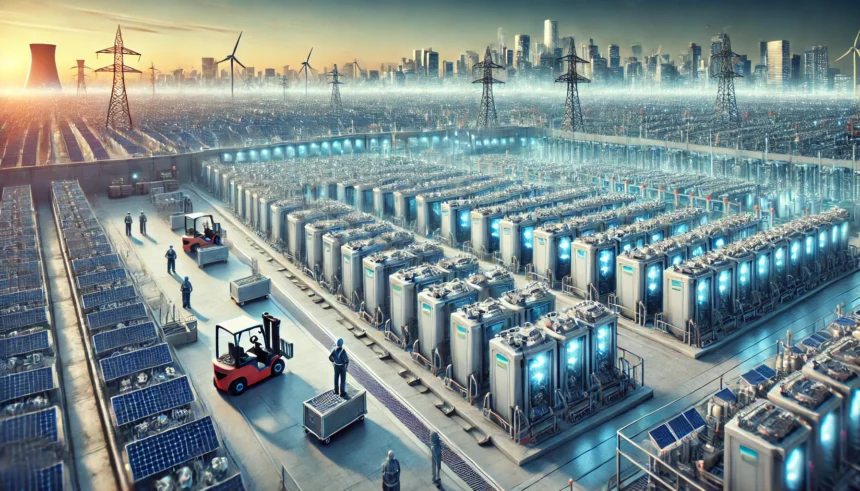A Giant Leap in Battery Power
In the bustling outskirts of Chennai, a Coca-Cola factory operates with a giant battery that powers its machinery day and night. This battery has replaced the polluting diesel generator, making the factory one of the few in India utilizing stored electricity. This shift is vital for India’s transition to cleaner energy sources.
Current State of Battery Storage
- Industry Share: India’s lithium-ion battery storage makes up only 0.1% of the global battery storage market.
- Growth: This year alone, India has added about one-third of its total battery infrastructure.
- Storage Capacity: Currently, India has around 100 megawatts of battery storage, complemented by 3.3 gigawatts from hydropower.
Meeting Future Energy Needs
The Indian government estimates a need for about 74 gigawatts of energy storage by 2032, but experts argue the actual requirement could be double to meet the growing energy demands.
Challenges and Opportunities
- Cost and Perception: Some customers are hesitant about adopting battery storage due to perceived higher costs compared to coal.
- Supply Chain: The concentration of battery manufacturing in China poses risks due to geopolitical tensions.
- Investment: Major Indian companies are investing significantly in battery storage. For instance:
- Reliance Industries: Announced a 5,000-acre factory in Jamnagar, Gujarat.
- Goodenough Energy: Plans to invest $53 million by 2027 in a large battery factory in Jammu and Kashmir.
Expert Insights
Alexander Hogeveen Rutter, an independent energy analyst, believes increasing storage capacity should go hand-in-hand with renewable energy expansion. He argues that combining clean energy with adequate storage can replace coal now, not just in the future.
Declining Costs and Global Trends
- Battery Costs: Global costs are dropping faster than anticipated, making energy storage more competitive.
- Global Examples: Battery storage meets peak electricity demands in places like California, the U.K., China, and even smaller nations like Tonga.
India’s Unique Energy Challenges
- Rising Demand: With a growing population and increasing use of air conditioning due to extreme heat, India’s electricity demand grew by 7% last year.
- Future Growth: The demand is expected to grow by at least 6% annually for the next three years.
Flexible Solutions for Rapid Growth
Ankit Mittal from Sheru, a software company offering energy storage solutions, suggests making battery storage sites more flexible and accessible to the national grid. This flexibility can help power regions with the most urgent energy needs.
Government Support and Future Policies
- Current Support: The Indian government has announced a $452 million scheme to support an additional four gigawatts of battery storage by 2031.
- Policy Needs: Future policies could provide more incentives for clean energy storage, leveling the playing field with coal.
A Call for Policy Change
Akshay Singhal, co-founder of Log 9 Materials, believes better government support can help India meet its energy demands sustainably. He states that a significant policy change can jumpstart the clean energy ecosystem.
Conclusion
India’s journey towards clean energy is well underway, with significant strides in battery storage. However, to fully harness the potential of renewable energy, expanding storage capacity is crucial. With the right investments and policy support, India can meet its growing energy demands sustainably and efficiently.
















